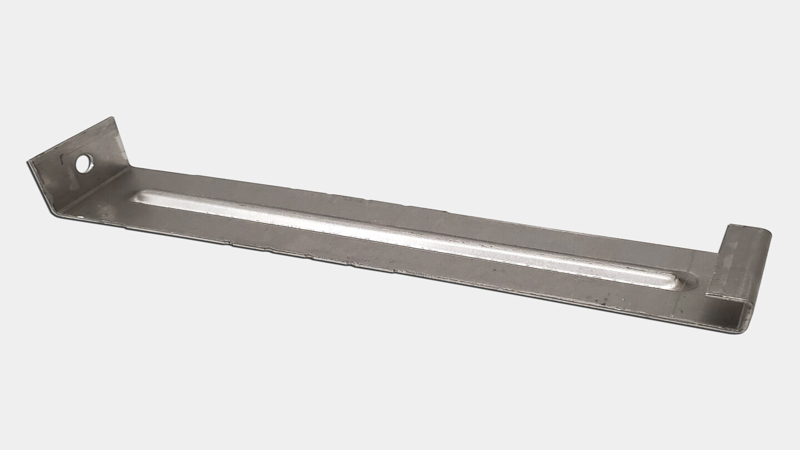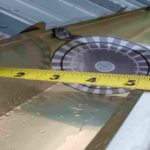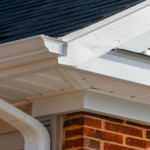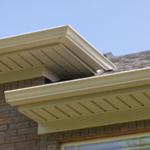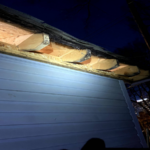If you want to avoid disaster as a homeowner, it is important to know the correct techniques for gutter installation. Many people think that they can just install gutters without taking the time to do it properly, but this often leads to problems down the road.
One of the most common mistakes people make when installing gutters is not using the proper size of hangers. If the hangers are too small, they will not be able to support the weight of the gutters when they are full of water. This can lead to the gutters sagging or even falling off of the house entirely.
Another common mistake is not using enough sealant. Sealant is important because it helps to keep water from seeping through the seams of the gutters. If there is not enough sealant, water can leak through and cause damage to the fascia board or the soffit.
It is also important to make sure that the gutters are installed at the correct angle. If they are installed too flat, they will not be able to drain properly. This can lead to water pooling in the gutters and eventually overflowing. On the other hand, if they are installed too steeply, they will not be able to hold as much water and will also overflow more easily.
What are some common mistakes that people make when installing gutters?
- One of the most common mistakes people make when installing gutters is not properly securing the gutters to the fascia board. If the gutters are not properly secured, they can easily become detached from the house during a heavy rainstorm, which can cause significant damage to your home.
- Another common mistake is not properly slope the gutters. Gutters should be installed with a slight slope, typically about a quarter of an inch for every 10 feet, in order to ensure that water can properly drain through them. If the gutters are not properly slope, water can pool in them and eventually overflow, causing damage to your home.
- Another common mistake is not installing gutter guards. Gutter guards help to keep leaves and other debris from clogging up your gutters, which can cause them to overflow.
- Finally, another common mistake is not regularly cleaning your gutters. Gutters should be cleaned at least once a year to ensure that they are free of debris and functioning properly.
What is the rule of thumb for gutter installation?
The rule of thumb for gutter installation is to install them so that they are level with the edge of the roof. This will ensure that water is directed into the gutters and away from the foundation of the house.
How do you put ends on gutters?
There are a few ways to put ends on gutters. One way is to use end caps. End caps are placed on the end of the gutter and screwed or nailed into place. Another way is to use an end strip. End strips are placed on the end of the gutter and then sealed with roofing cement.
What is the rule of thumb for downspouts?
There is no definitive answer to this question as it depends on a number of factors, including the size and type of your home, the amount of rainfall in your area, and the slope of your property. However, a general rule of thumb is that you should have one downspout for every 20 feet of eaves trough.
Should gutters be nailed or screwed in?
There is no definitive answer to this question as there are pros and cons to both nailing and screwing in gutters. Nailing gutters may be more secure in high winds, but screwing them in may provide a more water-tight seal. Ultimately, it is up to the homeowner to decide which method they prefer.
Why would you not put gutters on a house?
There are a few reasons why someone might choose not to install gutters on their house. One reason could be that they live in an area with very little rainfall and they feel that the gutters would be unnecessary. Another reason could be that they think gutters are ugly and they don’t want to mar the look of their home with what they consider to be an eyesore. Finally, some people simply don’t want to take on the responsibility of cleaning out the gutters on a regular basis.
Should gutters be flush with fascia?
There is no right or wrong answer when it comes to the level at which your gutters should be placed in relation to your home’s fascia. Some people prefer to have their gutters flush with the fascia (the board that runs along the edge of your roof), while others like to have them slightly lower. Ultimately, it is a matter of preference and what looks best to you.
How much standing water in gutter is OK?
It is generally accepted that having up to one inch of water in your gutters is okay. This is because the gutters are designed to handle this amount of water and will not overflow. Anything more than one inch of water in your gutters is cause for concern and you should take action to remove the water.
Bottom Line
If you’re a homeowner, then you know that gutter installation is an important part of keeping your home in good condition. However, many people make the mistake of thinking that any old gutter will do. This is a recipe for disaster, as the wrong gutter can actually do more harm than good.
Luckily, there are some easy ways to ensure that you choose the right gutter for your home. First, make sure to measure the space where the gutter will be installed. This will ensure that you get a gutter that is the correct size. Second, choose a material that is durable and will withstand the elements. Third, make sure to hire a professional to install the gutter. This may seem like an unnecessary expense, but it’s worth it to avoid any potential disasters.
following these simple tips, you can put an end to homeowner disasters caused by incorrect gutter installation.
